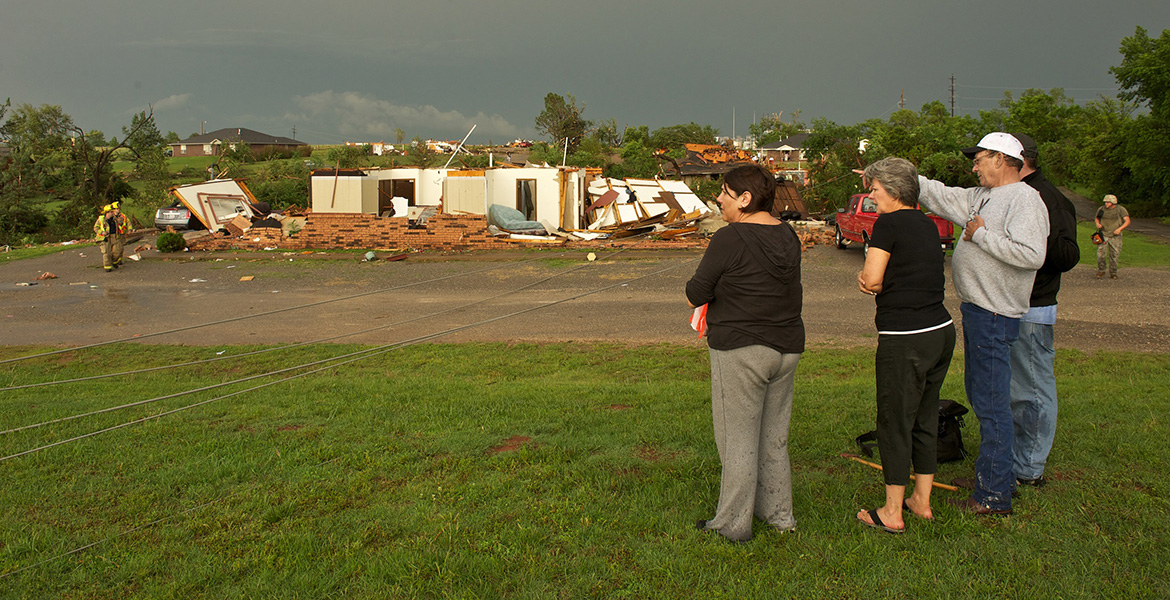
Prepare for tornado season before the sirens sound
Monday, May 11, 2020
Harsh and sometimes deadly weather that comes with living in America’s Tornado Alley underscores the importance of planning for the worst, even if those preparations thankfully turn out not to be needed.
“Whether you’ve lived here your entire life or just relocated recently, it’s important to be prepared in the event of a tornado or other damaging weather,” said Gina Peek, Oklahoma State University Extension housing and consumer sciences specialist. “Advanced preparation has proven many times to have saved lives.”
The best place to be during a tornado is in a designated safe place. It is imperative to make sure any storm shelter is ready for occupancy. The approach of a tornado is not the time to discover the shelter is full of black widow spiders, standing water or used as storage leaving no room for people.
“If you discover water in your shelter, inspect it and determine how the water is getting in,” Peek said. “Repair any cracks to help keep out moisture. If water is coming in through the door, homeowners will need to take steps to divert rainwater away from the entrance.”
Spiders and other uninvited guests also get in through small cracks. Sealing those will help eliminate them. Once the shelter is free of spiders, rodents or other pests, clear out any cobwebs and sweep the floor. Next, prepare an emergency kit of essentials in the event you have to shelter in place for a while, or if your home is significantly damaged and no longer habitable.
Peek said an emergency kit should contain nonperishable foods, a can opener, flashlights, extra batteries, a battery-operated radio and a first aid kit. Bottled water is another essential. A good rule of thumb is to have on hand about one gallon per person, per day.
“Make sure everyone is wearing shoes when he or she takes cover,” she said. “Feet need to be protected in the event of storm damage when a person eventually emerges from the shelter. Lawns can possibly be covered with broken glass, splintered wood and downed trees.”
OSU Extension recommendations are to make a list:
- Think about an individual’s daily needs, as well as any special needs a family member may have.
- Families with babies and small children should pack diapers, formula and other child-related essentials.
- Older adults may have health or mobility issues requiring special assistance.
- Must-have medications should be packed and ready to take into the shelter.
- For households with young children, a special stuffed toy or blanket should be brought into the shelter to help comfort a potentially frightened child.
Do not forget about pets, many of which will be agitated in response to the nerve-wracking situation, either because they are sensitive to oncoming weather or picking up cues from humans. Be sure to include a strong leash and muzzle in case the animal becomes frightened. For small pets, have a pet carrier stored so it is ready to go if needed. Plan for the possibility that a pet may bolt after exiting the shelter.
“It’s important that a pet’s identification tags be current and include important information such as the owner’s name and phone number,” said Dr. Rosslyn Biggs, OSU Extension veterinarian and director of continuing education for the university’s College of Veterinary Medicine. “Consider microchipping the pet as a permanent means of identification. Owners also should update their contact information with the microchip registry as changes occur.”
OSU Extension is one of two state agencies administered by the university’s Division of Agricultural Sciences and Natural Resources and is a key part of OSU’s state and federally mandated teaching, research and Extension land-grant mission.
MEDIA CONTACT: Donald Stotts | Agricultural Communications Services | 405-744-4079 | donald.stotts@okstate.edu
